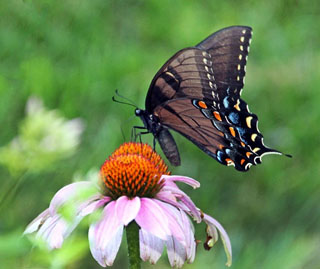Chesapeake Bay
Efforts to restore the Chesapeake Bay are a study in cowardice and political expediency
There is more very bad news for all of us in Chesapeake Country: the bay watershed lost 20,000 acres of forest a year (2013-2018). Maryland led the way. A new study also shows that developed impervious areas in the watershed increased by 50,651 acres from 2013 to 2018. This is mostly from new structures, roads, driveways, parking lots and runways.
Read MoreChicken industry wins again, crippling Chesapeake Bay restoration efforts
In 2022, the industrialized Delmarva chicken industry produced 596 million chickens in 4,889 chicken houses—a record 4.4 billion pounds of chicken and $5 billion in wholesale value. This was a 38% broiler increase in a decade. These chickens produced 1.5 billion pounds of chicken excrement — equal to the weight of two Statues of Liberty! Corn and soybeans grown for feed are highly nitrogen intensive, adding more nitrogen to the bay.
Read MoreClamping down on farm pollution is a necessity for a better Chesapeake Bay
This is the third time a cleanup deadline has been missed without sanctions as Clean Water Act violations by the states are ignored by the EPA and no new regulatory and financial initiatives are required.
At the root of this failure is agricultural pollution. We have allowed agribusiness to lather 25% of the bay watershed with millions of tons of fertilizers and animal excrement from 83,000 farms. Agriculture has become the largest and least-regulated source of bay pollutants: 50% of nitrogen; 45% of phosphorus; and 60% of bay choking sediment.
Read MoreAgriculture is destroying the Chesapeake Bay
Between 1950 and 1982, the amount of nitrogen from manure and fertilizer applied to bay crop land nearly doubled, reaching 960 million pounds annually, as farmland decreased by nearly half. Alarmingly, the average annual rate of nutrient reductions from bay region farmland has actually decreased since 2009.
Read MoreIt’s time for DNR to restrict the commercial crab harvest
The time has come for DNR to restrict commercial harvest by adopting strict daily bushel limits for males and greatly decreasing the bushel limits for females, reducing the number of crab pots used, shortening the crabbing season, closing crabbing two days each week, and adopting a quota system for each commercial crabber as with rockfish.
Read MoreBest practices for lawn care when living in the Chesapeake Bay watershed
rigorous scientific review found that the world’s insects are hurtling down the path to extinction, threatening a “catastrophic collapse of nature’s ecosystems.” More than 40% of insect species are declining radically including 53% of butterfly and 46% of bee species; some are critical pollinators responsible for 35% of the world’s food crops. More than 3,500 species of native bees sustain these crop yields. Three-fourths of the world’s flowering plants also depend on pollinators. Pesticides are clearly implicated in these radical declines of insects as well as other pollinators including moths, birds, and bats.
Read More